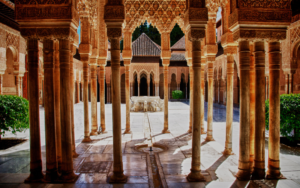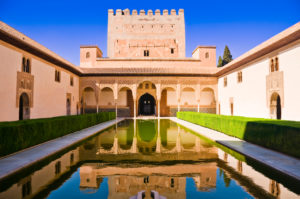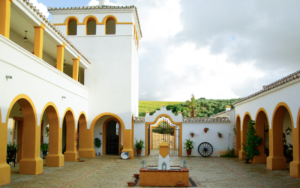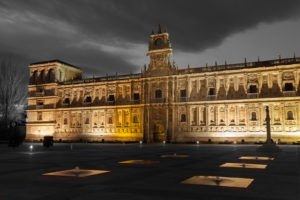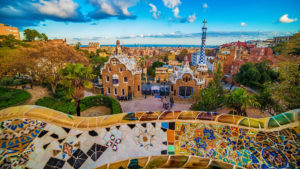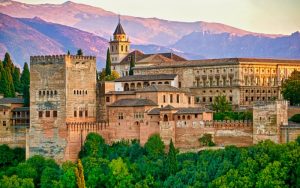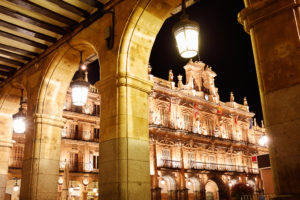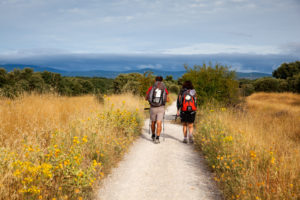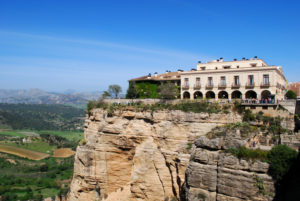Visiting Spain: My Best Tips for Enjoying an Artsy Trip
This page may contain affiliate links to products or services I’m happy to recommend. If you click on an affiliate link and then make a purchase, Artsy Traveler may earn a small commission at no cost to you. Thank you!
Visiting Spain? Olé ! I love traveling in Spain. Its vast size, varied regions and tumultuous history make it feel a world away from the rest of Europe. You won’t run out of areas to explore for a very long time.
In fact, I think Spain is one of Europe’s most varied countries in terms of regions, languages, landscapes, cultures, and history.
If you’re planning to visit Spain, you’ll need to do some serious planning. It’s a VERY big country, so your first priority is to determine how much you can realistically see in the time you have available.
Since my first trip to Spain when I was 21, I’ve returned to Spain eight times to revisit old favorites and discover new ones.
Visit Spain for its fiery flamenco, sumptuous Moorish palaces, gold-crusted cathedrals, friendly people, and some of the world’s greatest modern art.

Posts About Spain
Here are my posts about visiting Spain to give you ideas about what to see and do.
What’s Special About Spain?
Spain’s vast, sweeping landscapes conjure visions of Don Quixote riding into the sun and tilting at windmills. It’s harsh, unforgiving and yet extremely romantic.
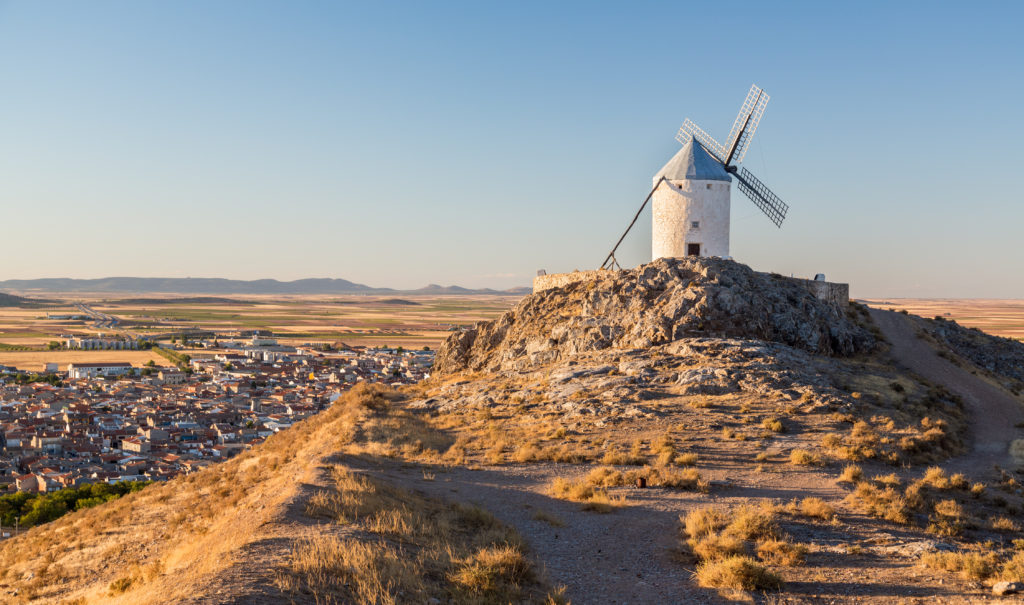
When we drive through Spain, I always ask Gregg to add Concerto for Aranjuez by Joaquín Rodrigo to the playlists he creates for our car trips. Here’s a clip. When you hear it, you dream of Spain. You just do.
I dare ya to listen to it and not swoon!
The history of Spain is blood-soaked and fascinating. You’ve got Moors and their expulsion from Spain in 1492, the horrors of the Inquisition in the 15th century, the indescribable atrocities of the Spanish Civil War and the struggles of the Catalan and Basque peoples. Not that it’s all violent. Spain’s history is as diverse and interesting as its various regions.
And of course, there’s the art. Spain gave the world such masters as Goya, el Greco, Picasso, Gaudi, Miró, and Dalí. You’ll find scores of wonderful art museums in Spain, from the stately Prado in Madrid to the not-to-be-missed Sagrada Familia, Gaudi’s still unfinished modern cathedral in Barcelona.
Are you ready to explore Spain?
Practical Tips for Visiting Spain
Spain kind of gets under your skin. It’s a bit harsher, a bit more ‘in your face’, a bit more, well, Spanish, than the other countries in Europe.
Make a home for Spain in your heart, for its sun and heat, its tapas and arts, and above all, its duende. Passion and suffering, the depths of the soul and a spark of the immortal—that’s duende.
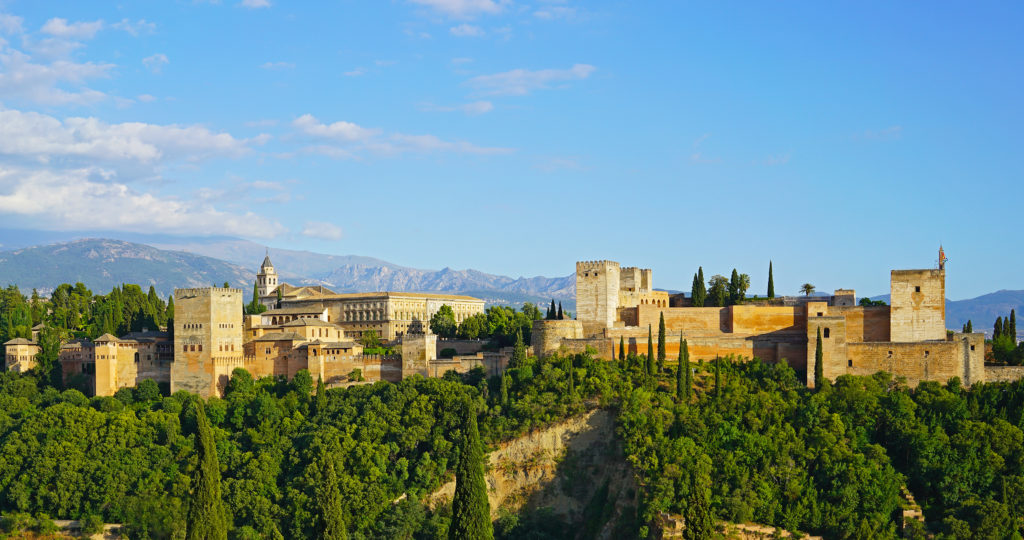
Planning to Travel in Spain
Spain extends from Portugal in the west to the Atlantic Ocean and the Bay of Biscay in the north and northwest to the Pyrenees in the east and the Mediterranean in the south.
You learn just how big Spain is when you drive across it. We’ve done so a few times. Be prepared for large expanses of brown countryside, millions of olive trees, and in the north stunning green mountains and rolling hills. Here’a map pinpointing the areas I’ve traveled in and written about on Artsy Traveler. Click a number to see a link to the relevant post.
Check Events and Exhibitions
While creating your itinerary, search the web for exhibitions and performances that will be on while you’re in a town or region in Spain. You don’t want to arrive in a city the day after an exhibition of a favorite artist closes.
Once you’ve arrived in Spain and you’ve embarked upon your travels, keep an eye out for events advertised on posters, ask your server at dinner to tell you what’s happening in the area, and chat with locals and other travelers about their experiences. You’ll likely discover places you’ve never heard of but will immeasurably enrich your visit.
Most of the time, we find information about local events, festivals, concerts, and exhibitions on posters or by talking to people. On a solo trip to Spain, Gregg stumbled upon a festival celebrating Galician culture on a solo trip to Santiago de Compostela that he captured on video.
Choose Your Transportation
You probably won’t want to drive to Spain unless you’re already traveling around the southwest of France and decide to pop over the border to check out Barcelona in the southeast or Bilbao in the northeast.
Fly to Madrid or Barcelona and then, after you’ve spent a few days enjoying city sights, either rent a car or hop on a train and explore my suggested regions (see below).
Public Transit
The slick new AVE high speed train whisks you in under three hours from Barcelona to Madrid. At times you’ll reach speeds of 300 kph! I don’t think I’ve ever been on a faster train, even in Japan.
In the first-class car (well worth the splurge), you’re served a four-course lunch that includes wine or beer and even brandies. Luxury!
We’ve traveled around Spain by train quite a bit, with no worries. Considering the distances, train travel makes good sense. Instead of long-distance drives, you can relax and read a good book, or just watch the olive trees go by. You’ll see a lot of olive trees in Spain. The country dedicates 2.4 million hectares to olive trees, making Spain the world leader in olive production.
TIP: If you prefer not to drive in Spain, I recommend combining train travel with the occasional local tour. You’ll get to see much more of the countryside and have the benefit of a knowledgeable guide.
Book your train tickets before you leave home. The extensive Rail Europe website has schedules and prices and an excellent trip planner. You can book within three months of your travel date.
Rental Car
Because of the long driving distances, consider taking trains between major destinations and then renting a car to explore the countryside.
Here are areas of Spain I recommend you explore by car:
- Galicia in the northwest where Santiago de Compostela of the Camino fame is located.
- Northern Spain including Asturias and the Basque country around Bilbao
- The White Towns of Andalusia (highly recommended for car travel).
TIP: Do not arrange to pick up your rental car in the center of the city. Take a taxi to the airport and pick up the car there.
Driving Tips
Driving in Spain can be a bit on the dull side depending on where you go. The good news is that you should find the driving easy on good roads. The scenery from region to region varies—sometimes bleak, sometimes pretty, and in the north and southwest, spectacular.
One drawback of driving in Spain is the lack of roadside rest stops on the major highways. In other European countries, such as Italy and Spain, flashy autoroute cafés abound, offering relatively okay food and at least a good cup of coffee.
In Spain, the roadside places are dimly lit and a little dreary. Platters of mostly deep-fried tapas are laid out on the counters under a few lazy flies and the facilities can be a bit sketchy.
But these are minor quibbles. If your itinerary requires a drive across Spain, then go for it. An excellent plus is that the traffic is generally pretty sparse, except around the big cities like Madrid and Barcelona.
TIP: Never (and I mean never!) attempt to drive into the medieval center of a Spanish town. You’ll get lost and scrape the side of your rental car. Park in a parking lot outside the city gates and either walk or, if you have luggage, grab a taxi.
Mind you, even our taxi driver got lost trying to find our hotel in the maze of tiny streets in Cordoba.
Driving into Spain
You cross the border into Spain from France to the northeast or from Portugal to the west. On our most recent trip, we entered Spain through a long, long tunnel that linked to France through the heart of the Pyrenees.
At the top of the pass through the Pyrenees, we entered the 3 km-long Túnel de Bielsa-Aragnouet that connects France to Spain. The sun burst out of the clouds at just about the same time that we emerged, blinking, from the tunnel.
The first thing we saw was the Bienvenido a España sign and then the iconic cut-out of a Spanish bull guarding a hill overlooking the road. Back in the 1950s the Osborne sherry company erected these bulls all over the country. They’ve become synonymous with Spain although I find it ironic that they started life as advertising.

Choose Where to Stay While Visiting Spain
We’ve had excellent luck with our accommodations in Spain. We’ve almost always experienced good service, large and comfortable rooms, and reasonable rates.
Budget-wise, Spain is in the moderate range, although you can definitely pay a lot for luxury. On average, we pay €100 a night for a comfortable three-star hotel and about €120 for a four-star hotel.
Prices can be higher in Barcelona, but definitely spend the extra money to get a nice place in the Eixample district.
I loved my stay at the Cram Hotel (yes, really!) with its rooftop pool and modern décor. I told the man at the front desk that my last name was Cram. He didn’t give me a discount but he did give me a free breakfast!
For more information and recommendations about places to stay in Spain see Where to Stay in Spain: My Best Picks.
I recommend using services such as booking.com and Trivago to book your accommodations in Europe. All your reservations are kept together in one place when you download the service’s app.
Booking.comEating in Spain
The Spanish invented tapas and we’re glad they did. Even better are the pinchos (pintxos in Basque) in the Basque region, particularly in marvelous San Sebastian.
Tapas are often deep-fried morsels of vegetables and meats that are perfect for a pre-dinner snack or for a whole meal if you order enough of them. Ham is heavily featured. The Spanish do love their ham. You’ll notice massive ham shanks swinging gently in the breeze above many a bar in southern Spain.
Pinchos (pintxos in Basque) are heaven on a napkin. Layers of different textures and tastes are built into sometimes towering edifices that require oral gymnastics to eat with any degree of decorum. Read about one of the most memorable gastronomic experiences we’ve had in Europe (and that’s saying something) in my post A Driving Week in Northern Spain.

One thing to be aware of when in Spain is that the Spanish people do not eat dinner at six like many North Americans do. In fact, even eight is considered early, with ten being the norm. Enjoy a few tapas and pinchos to fill the gap in the late afternoon/early evening and then join the locals later on for a solid meal.
Portions in Spain are generous and hearty. Be careful not to over-order! These days, Gregg and I often order one dish to share. We always have enough food and the servers don’t mind.
Ask to dividir una porción en dos (divide a portion in two) or just hold up one finger and then motion to the two of you and say por dos. It’s not great Spanish but it works.
Tours to Take While Visiting Spain
Small group tours are a great option for getting out into the countryside, particularly if you’ve chosen not to drive in Spain. Find local tours in the town or city you’re visiting, or pre-book tours of a specific region. Here are some options.
Conclusion
Have you traveled in Spain? Share your recommendations and experiences with other Artsy Travelers in the Comments below.
Here are some posts to read next to help you plan and enjoy your time in Spain:

